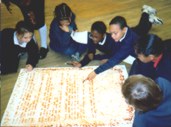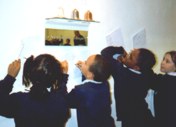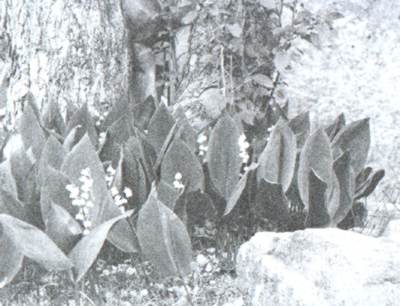|
|
|
| ||
| Espańol |
Currently only excerpts & illustrations from the last 13 issues (numbers 43 to 55) are on this site. Scroll down to view the September 1999 issue. Click on the numbers to view other issues. Info about the current book on the arts | |||||||||||||||||||||||||||||||||||||||||||||||
| Contents List | |||||||||||||||||||||||||||||||||||||||||||||||
| excerpts & illustrations (The full articles are only available in the printed magazine. Click on "subscribe" for more info.) |
 |
56 |  |
55 |  |
54 |  |
 |  |
53 |  | 52 |  |
51 |  |
 |
 |
50 |  |
49 |  |
48 |  |
47 |  |
 |  |  |  |
 | ||||||||||||||||||
 |
 |  |
 | ||||||||||||||||||||||||||||||||||||||||||||
| 46 |  |
45 |  | 44 |  |
43 |  |  |
 | 42 |  | 41 |  | 40 |  | 39 |  |
 | 38 |  | 37 |  |
36 |  | 35 |  |
 |  |
34 |  |
33 |  | 32 |  | 31 |  | |||||||||||
News & Letterspages 2 - 3Letters from: Margaret Carloa U.K. |
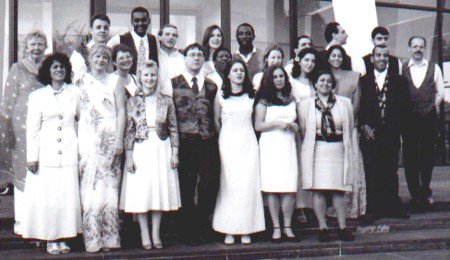
who sang in and at the Frankfurt House of Worship in May 1999. | ||||||||||||||||||||||||||||||||||||||||||||||
...One World Rhythm
began about two years ago. It was formed by Kingsley and Suzanne Swan, who come originally from Bermuda and have
lived also in the USA. The purpose of the choir is to promote the concept of unity from a Bahá´í vision.
We have a variable number of members, from a large number of origins.
The music is gospel-inspired rather than gospel; we also sing Persian Bahá´í songs and pop songs with a
Bahá´í flavour,
and in Caribbean and other styles. The music is vibrant and lively... |
 Sculpture by Christophe Doucet
Sculpture by Christophe Doucet
in Romania, 1999. |
Christophe Doucet (France) My journey in Romania was a great and very deep experience. I went to Transylvania to build a sculpture with Miklosi Denes. I have been involved in art and the Bahá´í Faith for more than 15 years, and by moving from my forest in South West France to another forest in Europe, it was a way to go further into those two things. As a foreigner, I felt uneasy initially, but that soon disappeared with the help of some friends from Tranzits (An arts organization run by the Hungarian minority in Cluj. They organize diverse arts events.) and the Bahá´ís.... My art work in Cluj: two bathtub forms symbollising the body. They are like the negative spaces of our body. You can have this feeling when you take a bath. The water designs your negative form. These shapes were made in paper, paper as a cocoon, a cocoon built by our skin caterpillar. The colour of the paper is the same as the skin. We are building our cocoon all around us as we grow and grow and grow, when suddenly we are tall enough to become a butterfly and to fly, to reach the stars. We open the bathtub cocoon to get out of our shape, out of our body, out of ourselves to reach maybe ourselves again but as a light... | ||||||||||||||||||||||||||||||||||||||||||||||
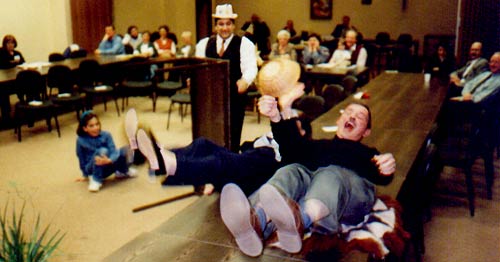
Delegates at the 1999 Belgium Bahá´í Convention act out a fable as part of the main programme. | |||||||||||||||||||||||||||||||||||||||||||||||
|
CD of the Hidden Words
Letter from Samyar Bukovcan, U.S.A.
I am co-ordinating a project to set some of the Hidden Words to music and record them on a CD. The music will be in a wide variety of styles and by a number of musicians...
In order for the project to continue at a steady pace, it needs donations. Currently, I am searching for possible grants.
The project will continue and be completed, but how soon depends on how the money flow goes. I would like to ask if any
of the friends is willing to contribute money to the project. Right now, whatever we can get would be a great asset...
I can be contacted at SBukovcan@aol.com Nancy Harris (U.S.A.) My husband and I do workshops in elementary schools, using flutes and drums to demonstrate how people’s cultures are reflected in their music. In the American Indian music, the drum is compared to the heartbeat and the flute to the voice. Drumming and singing (using voice or an instrument melodically ) are basic to all music. The third part is dancing. Sort of like Heart and Soul. .ash (U.S.A.) A friend gave me a CD of the jazz composer Steve Reich which includes conversations.., He transposed the "speech melodies" of each speaker, then played back their melodies instrumentally ...Everyone is actually a composer of melodies, in everything they say. We already sing our prayers... Elena Afscharian (Germany) ...Nowadays I sing in a local city choir, international folk-songs, gospels/spirituals, old madrigals and contemporary music, songs of liberation (from South Africa) and the like. In fulfilling an old dream, I just started learning to play the Celtic Harp (John Egan). I had the great opportunity to attend a harp-building workshop with Frank Sievert, a keen harp builder. Maybe someone knows him, for he participated in Edinburgh (international harp meeting)... Michael Wilkinson (U.S.A.) In this country, musicians use drums primarily for accompaniment, though occasionally the music allows the drummer some time alone (the ‘drum solo’). In other cultures, drums are used as the musical focus. I grew up in Jordan and spent school years in Lebanon and Turkey. During my time there, I was privileged to hear some of the greatest drummers in the Arab countries play. I was inspired and truly awed... | |||||||||||||||||||||||||||||||||||||||||||||||
|
James Johnston, (U.S.A.) The Garden of Humanity exhibit has some 35 pieces of original paintings (watercolors and acrylics), drawings and prints (etchings and lithos). It is centered around Bahá´í themes and is designed to tell people about Bahá´í beliefs. It is offered to individual Bahá´í communities for their use, free of charge. The only responsibility the community has is to secure a venue. So far, the show has been in public libraries, coffee houses, student centers and art galleries. The show also has public presentations that include slides, music and readings... My contact details are: Jim Johnston, 1712 W. Glenn, Springfield, Illinopis 62704, USA, tel: (217) 546 5615, email: johnston@fgi.net |
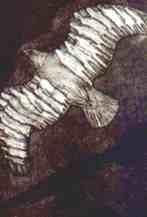 Double Winged Bird
Double Winged Bird
etching by James Johnston, U.S.A. | ||||||||||||||||||||||||||||||||||||||||||||||
Artist Profilespages 4 - 5 Richard Paton, curator / visual artist, U.K. |
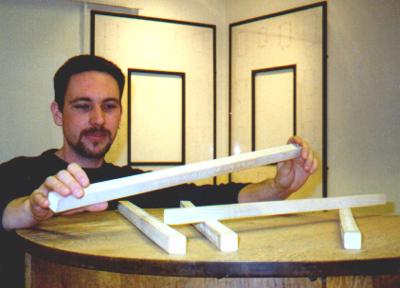
Richard Paton handling Certain Measures by Sonja van Kerkhoff. Portrait Whispers by Emma Pooley is hanging behind him. Wittgenstein once said ´Ethics and aesthetics are one and the same´, for van Kerkhoff the experiential process and the product are of equal value...words (Hidden Words) are engraved along the four sides... (and) the rods are presented at chest height to promote a debate on the issue of morals...they are ´tools´ for the spirit... page 12, exhibition catalogue by Richard Paton. Emma Pooley´s work is the result of 12 people attempting to define themselves and one another during a 20 minute exercise. These two panels exist as records but also offer a system of looking which shifts from panel to panel... page 20, exhibition catalogue by Richard Paton. |
There were a number of factors that prompted me to curate this exhibition, which I called Image defining Word
defining Image. The first was that my own personal art practice has been concerned lately with language, its
visibility in public spaces, and its sometimes indefinability in the context of exploring human experience. I’ve been
using language, which is the primary vehicle of communication, and integrating it into image making, with the hope that
the communicative power of my work would become more potent and fertile. | ||||||||||||||||||||||||||||||||||||
|
Another reason I wanted to curate the show was to look more closely at what other contemporary artists are up to in this area. It has been very rewarding. Ever since the likes of Kosuth, Holzer, Kruger, Burgin, Syrop and others during the 80s, there’s been an explosion of text-based work, and now we see the field being explored in many diverse ways. I simply wanted to look at these more closely. I thought it appropriate to link the show with the first London Festival of Literature, mainly for publicity reasons, but also because I think writers and artists share many ideas and have closely related pursuits. |
|
Miep Diekmann, author,
The Netherlands. Talks about her book, Total Loss, weetje wel (translation, Total Loss, you know), published by Querido Publishing, 1973. My inspiration for this book came, in the first instance, from being a mother of teenagers in the late '60s and giving lectures to teenagers in schools in the Netherlands. I was a well-known author in this country for using colloquial language and addressing contemporary issues in my books. The Flower Power or Hippy movement was in full swing and I decided to focus on the pros and cons of being raised in a hippy lifestyle. I began with the theme of individualism, not following along in the group, as my starting point for the story, not only to illustrate the hippy and non-hippy lifestyles but also to reflect the realities of puberty... |

Miep Diekmann, in front of two portraits
painted in (left) 1958 and 1955 in the Museum of Literature, The Hague, The Netherlands, May 1999. | ||||||||||||||||||||||||||||||||||||||||||||||
|
I worked on how to introduce other characters around the central story of Katja and Total Loss´s friendship, not only to develop these characters further but also to give the story several layers of meaning. I then researched actual events that I could weave into the story, and one helpful source
was the Youth department of the Hague Police. Here I heard all sorts of stories that I could use,
such as the types of abuse teenagers called out to the police and how the gangs behaved... I saw children brought on the protests and wanted my book to address the problems thesechildren might have adjusting to other children, school and so on. In the book, Total Loss's parents mean well, but they leave him in the care of a neighbour, Lola, while they go to Bangladesh to help the poor with the flooding. At the same time, because he grows up hearing all sorts of things and being involved with these, he is also wise for his age and doesn't really fit in with other children his age. This child is more aware than others, such as when he goes to visit the elderly in the street to offer them help in their houses, and he is also a gentle type of personality. "In my time it was a shit school" burst Straatman out again. But Total Loss acted as if it didn't affect him. He knew why and it was partly his own fault. Mr. Straatman always was alone and if you never have anyone to talk to then the first person to visit always got an ear full. As Pappa-Paul had carefully explained. page 3 | |||||||||||||||||||||||||||||||||||||||||||||||
 The Migrant Voice, a still from the media / installation, Resonance by Kuljit Chuhan, U.K. The work interactively focuses on understanding the migrant experience within the framework of global economy and centralisation of wealth, whiile also
tapping into the daily experiences and struggles of the respective communities. Resonance integrates layers of documentary
video, interviews, graphics, animations, computer games, along with an original 3-dimensional soundtrack, so allowing the viewer
to navigate through a variety of environments exploring the contrasts and resonances between migrant settlers.
The Migrant Voice, a still from the media / installation, Resonance by Kuljit Chuhan, U.K. The work interactively focuses on understanding the migrant experience within the framework of global economy and centralisation of wealth, whiile also
tapping into the daily experiences and struggles of the respective communities. Resonance integrates layers of documentary
video, interviews, graphics, animations, computer games, along with an original 3-dimensional soundtrack, so allowing the viewer
to navigate through a variety of environments exploring the contrasts and resonances between migrant settlers.
|
|
I often incorporate an opposite type of person to bring out the personality of the main character, and in this story, it is Katja, a girl of 13, who is also an only child. She is an outcast in her street, because her father is a policeman, and I thought it would be an interesting combination for the story to have a younger boy become friends with a slightly older girl.
That annoying Total Loss, who was two years younger, sometimes said things Katje had never heard of. But admit that? Never… page 63 The two children have opposite opinions on many issues and yet they remain friends and continue to hang out together... "And a man crying in the street. Come on!" There was a boundless contempt in Katja's voice. "Such a big fellow and then crying." "You are a sick girl. That a man cries is a lot better than one who makes others cry. You want to do all that men do and have what we have. But if we do as you do, that's not allowed." He was almost choking in anger. "If we have long hair or necklaces, then everyone thinks we are soft." "Shhh, people are looking." Katja was embarrassed - from her high heels to her pinned up hair. "Let them look and listen. And if men give each other a kiss, sometimes in a film, then everyone whistles and goes crazy. And yet you girls spend the whole day glued to each other…" He had run out of breath. A few people around him began to laugh, but Total Loss only felt the tears on his cheeks run. page 65 ...I was asked to write a play for youth and my response was to offer Total Loss, because I was too busy to sit down and write a new piece for the Jan Campert (Literature) Foundation. So I worked with the Dutch Youth Theatre Company to shorten the piece to a 50-minute performance and changed the ending a little. Each performance ended with a discussion about the play between the actors and the children. After performing in The Hague in 1982, it went on tour around the Netherlands for two years. |
pages 10 - 11 |
|
|
...Deciding to pursue photography full time was easy. Sandy was working full time, so there was no
financial pressure. This gave me the chance to find myself in this difficult and competitive but exciting field. In 1980, my parents purchased some land and we moved there to help raise cattle. This was in a very rural setting in Western Montana on the Flathead Indian Reservation... I received a call from Dorothy Patent, a local author of children´s books. She needed breed pictures for a book she was working on. When she gave me the list of needs, I only had one or two but told her I would get the shots for her. That fall, we drove around Western Montana visiting horse people, with me getting most of the shots for the book. I recognized that this was an opportunity for me to follow and Dorothy recognized the value of tying the text and photos tightly together in her books. This led to our being offered a contract in 1981 to produce a book for children called A Picture Book of Cows. My first book. Sometimes a book will require specific images and Dorothy will give me a list of needs, other books are written around the photos I get... Once an idea is crystallised in our minds, we approach a publisher and pitch the idea. Sometimes they jump on it fast, but most of the time it takes up to six months to get a reply. Once a contract is signed, Dorothy and I discuss a loose structure... ...I will then travel to the necessary places to make photographs. I may have a preconceived notion of what I want but I always make certain I am open to the unexpected. These often are the shots that make a book great. I shoot two basic styles: editorially and artistically. The editorial shot is an attempt to eliminate 200-300 words from the text. This allows Dorothy to use the space for something else. The artistic shots are those that evoke emotion. Often the two blend. My work is published by various publishing houses. They do all the sales. I travel to 20-25 art fairs a year across the USA to sell prints. Some prints are of images in books, but for the most part they are a separate collection of work. |
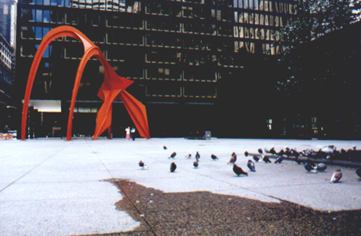 Calder Sculpture, Chicago, photograph by William Muñoz, U.S.A. |
I believe that art is meant to be shared with others...
...The public will do with it what it pleases. It may take decades to be appreciated or it may be an instant hit, or perhaps it will never reach more than a handful of people. But in the process of reaching a person, it will give a positive forward meaning to life for that person... For me, producing something of high quality for children is something that is going to benefit humanity, since in some small measure my work may influence some child who goes on to astonish us all. |
pages 12 - 14 Murk Jiskoot, percussionist, The Netherlands. | |||||||||||||||||||||||||||||||||||||||||||||||
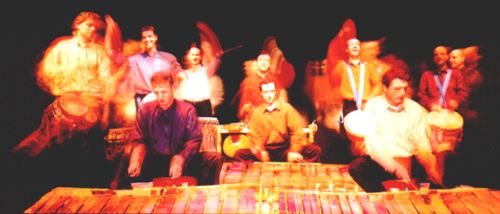 | |||||||||||||||||||||||||||||||||||||||||||||||
Anumadutchi: these Dutch guys create their own idiom combining upbeat
African rhythm with elegant melodic timbila, marimba with rustling wind chimes. Murk Jiskoot is third from the right. | |||||||||||||||||||||||||||||||||||||||||||||||
|
After graduating as a practising percussionist in 1989 I then did various jobs like playing in chamber music ensembles and symphonic orchestras around the Netherlands. Generally this was to perform contemporary music, since classical music often doesn’t include percussion. You know John Cage was the first to write a piece that was solely for percussion. He also gave some lectures at the conservatory in 1992 and we were going to perform with him in 1993, but he died and the performance was changed to a memorial concert. Since percussion is a new musical form we often perform the work of living composers. In that year I also performed solo concerts of contemporary music. It was very demanding to play all the instruments -eighty of them- let alone the organisation involved in transporting and assembling the truck load of instruments. A one and half hour concert required 16 hours of work, and after the costs of transport I didn’t have much left from my fee of 300 guilders. I put myself through this partly to compete in the International Gaudeamus Interpretors competition hosted in the Netherlands. I reached fourth in the competition, just one short of the finals. However I now have these pieces and instruments within my repertoire. Some were recorded and are used as examples for students studying the music. A year of that was enough, and when I stopped I started having children! ...I also performed in The Slagwerkgroep Den Haag (The Hague Percussion Group) which has performed regularly for the last 20 years. The members consist of teachers and ex-students of the percussion department. We have generally played contemporary pieces. I was also one of a group of teachers and students that began studying West African music, after a Ghanian drummer had given some lessons at the music conservatory. Then in 1990 we saw Doudou N’Diaye Rose perform at the at North Sea Jazz festival and were so inspired that we approached him afterwards. This world renowned Senegalese master drummer performed with 36 other drummers! That was an experience that blew our minds away. We asked how we could learn to drum like that. He introduced us to Aly his son and said that he wanted to live in The Netherlands, so we arranged for him to have a permanent teaching position at the conservatory. That’s 10 years ago now: he was our first teacher in West African music... In 1997 we produced our first CD, Djange Doch (meaning, First Steps in Wolof, a Senegalese language). About half of the ten tracks were composed by myself, and half by Wim Vos. The other musicians on the CD are Tom van der Loo, Jens Meijers, Niels van Hoorn, Aly N’Diaue Rose and Venacio Mbande. Djange Doch is the title of the first track which I composed and marks my first steps in the direction of a new idiom for Anumadutchi. The samba are played in a periodic irregular beat accompanied by Aly on the sabar along with a number of other percussion instruments. The next track, Kelfet begins with rhythmics created by tambourines, followed by the djembe and dunduns (African base drums - cylinders of metal or wood over which calfskin is stretched) performed by Aly and myself with a solo on tabala by Niels. The title refers to a wonderful colleague who, whenever it all got a bit much, would sigh: ´Quelle fête´. Playing the djemb‚ is without question always a blast! Ballad for Ynske, performed on two marimbas (a type of xylophone but with broader and lower tonal range) and a vibraphone (like a xylophone of metal keys where under the keys a device that produces vibrations of sound), was an experiment to see if what I composed on the piano would sound good on these two instruments. Mishka is a more funky piece dominated by the bugarabu (an ensemble of 4 African hand drums similar in sound to the South African congas) and the bass marimbas. Kickkuh begins with an explosive Ghanian-type of intro on drum-set, African drums and krin (a hollowed-out tree trunk generating in this case two different pitches), which then develops to a section on keyboard while one of the marimbas plays a slow melody in octaves while the other two play extremely fast rhythms in hoketus style (where one player fills the silences of the other). Then the drums return, followed by the keyboards with a dominating bass line. Finale ´94 is a showcase for Aly’s fine drumming as well as Venancio’s on timbila. We asked these two world class musicians to combine forces for a composition that would embody their distinct musical cultures for the RASA world music podium concerts in Utrecht in 1994. Practically all the drums and styles of playing we have learned from Aly and Venancio are heard on this track. On the CD Different, produced a few months ago, the formula of western and non-western percussion is elaborated on. In addition to marimbas, vibraphones, western and African drums, Japanese drums are used such as the enormous O-Daiko, Chichibu-Daikos and the Shime-Daikos. These Japanese influences are the result of working with the Dutch-based Japanese-oriented percussion group, Circle Percussion, with whom Anumadutchi performed in two theatre productions (Drums of the World I and II ). We also performed the vocals in the piece A doo we composed by Wim Vos, and the members of the Hague Youth Choir sing on two other compositions by Wim Vos. One of our plans is to produce a whole CD of compositions for voice and percussion with the Hague Youth Choir. We already have the music composed by Wim, but need to organise the recording as well as finance it. So far we have funded the costs of producing our CDs ourselves. A teacher at the conservatory has a small but international recording label, Ottavo Recordings, so people can order our CD from almost anywhere. In 1997 we also produced another CD in collaboration with Circle Percussion. This is available from Murk Jiskoot (email mailto:info@anamuduthci.nl) We perform regularly but we are not cheap and sometimes people don’t realise that we have so many costs such as transporting the instruments. We are flexible in the way we work and perform, for concerts, or for children or for a company product launch. Depending on the commission we could perform with up to 30 musicians... |
|
Pages 14 - 15 Joseph Sheppherd, writer, painter, and anthropologist, U.S.A. Alison Marshall in New Zealand of Arts Dialogue interviews Joseph Sheppherd in Oregon via the Internet concerning his latest book The Island of the Same Name. |
|
AM: Tell me about yourself and your interest in anthropology and archaeology. JS: First and foremost, I am a Bahá´í. For more than three decades the teachings of Baha’u’lláh have influenced everything I have done. The spiritual path I began to tread when I was a teenager h as lead me to be interested in the present and past conditions of human beings. AM: What lead you to start writing fiction? JS: While reading children’s books to my daughter Anisa, I found that most of the stories portrayed boys as subtly superior over girls. I decided to write something less sexist for her, something with SHEros as well as HEros. The result was the Goli and Kadjam adventures. Later, when I began to write with adults in mind, I drew from my own experiences carrying out academic fieldwork. |
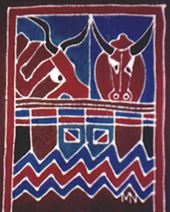
batik on cloth by Margaret Nagawa U.K. / Uganda | ||||||||||||||||||||||||||||||||||||||||||||||
|
I discovered that to be successful in writing academic non-fiction, the trick is not requiring readers to believe something impossible for them to believe. I learned this the hard way. I showed an early version of A Leaf of Honey to a professor of mine at Cambridge University only to be told that the research was more suitable for Reader’s Digest than a serious publisher. After that, I edited out all of the unbelievable, but true, events and discoveries, and made it palatable to academics. It is now used as an anthropological textbook. However, I saved the parts I took out and used them in novels. In doing this, I learned an interesting fact of human nature. If you present unbelievable facts to readers in the form of non-fiction, they will say: ´Neh,
life isn’t like that". But if you present the same facts in the name of fiction, readers are apt
to sigh and say: "If only life were like that".
AM: Tell me about the books you have written. JS: In no particular order they are:
AM: How does your anthropology and archaeology affect your writing? JS: My anthropological fieldwork has allowed me to meet remarkable people including shamans, sages and seers. These are lives about which I write. My archaeology has introduced me to the humbling reality of things long dead and almost forgotten. It has also reminded me of the brevity of physical existence in general and my life in particular. Like the things I dig up, the physical product of my life may very well be the object of some future archaeologist. It is little wonder, therefore, that archaeology and archaeologists figure in my writings, as backdrops and protagonists. I believe that archaeologists, like historians are the prophets of hindsight. It is strange that when they write, their work is considered as non-fiction. Archaeologists are not unlike seers. The PRE-history that they characterize is comparable in its equivocal nature to the POST-history which seers predict. They both function within a universe which provides them with only glimpses of the traces of things where nothing is truly perceived definitively. When they write or speak, there is no absolute reality to describe: the manifest and the hidden abide within each other, the seen hints of the existence of the unseen and the known whispers of the unknown. The words of both the archaeologist and the seer reflect this. This is, perhaps, why our vision of both the past and future share the same sense of mystery. The people who claim to apprehend conditions outside of their own time, can really only recount their fleeting glimpses of the traces of things which are ultimately unknowable to others. They can never really prove anything about the past or the future, no one can. Even with the passage of time, the accuracy of what they have said will be examined by others with the same limited vision, and the product of their momentary insight will be categorized as either fact or fiction. This, however, is of secondary importance to the archaeologist and seer. In the present, what really matters is if they are believed or not... |
Poempage 15 Salamander Dreaming by Richard Mills, Australia (about his second firewalk in 1993.) an excerpt... As the brilliant fire jewels Of your exquisite glowing coat Counterpoint their meaning in a dance Of twinkling transference incessant Flickering points of light that echoe Molten galaxies in a kaleidoscope Of boundless possibility. ... |
| ||||||||||||||||||||||||||||||||||||||||||||||
Photographs and Illustrations of work by:
Peter Randall-Page, U.K., Margaret Nagawa, U.K. / Uganda, Juel Pettersen, U.S.A. Kuljit ´Kooj´ Chuhan, U.K., Vivian Burnside, Ireland, Tim Wainwright and Jay Smith, U.K., Richard Paton, U.K., Sonja van Kerkhoff, The Netherlands, Jim Johnston, U.S.A., Guido Cooremann, Beligum, Christophe Doucet, France, Linda Defort, The Netherlands, Willam Muñoz, U.S.A. Translations, editing, layout, by:Kathleen Babb, Japan, Alison Marshall, Aotearoa / New Zealand, Steve Marshall, Aotearoa / New Zealand, Sonja van Kerkhoff, The Netherlands. | |||||||||||||||||||||||||||||||||||||||||||||||
|
Arts Dialogue, Dintel 20, NL 7333 MC, Apeldoorn, The Netherlands.
http://Bahá´í-library.org/bafa email: bafa@bahai-library.com |

